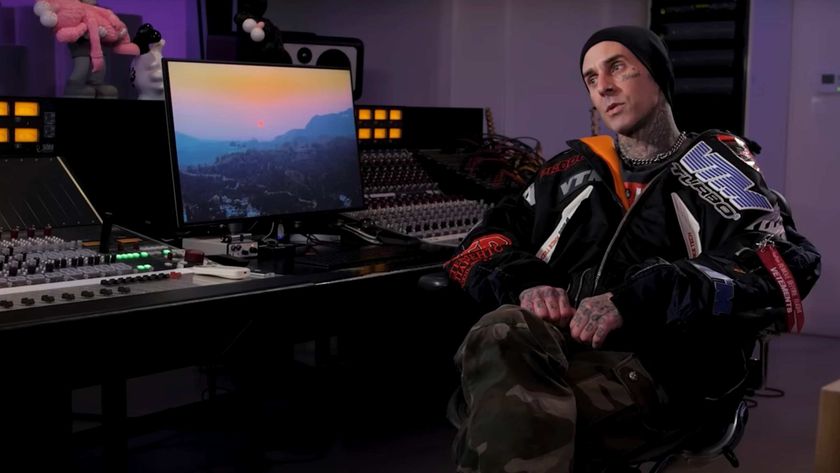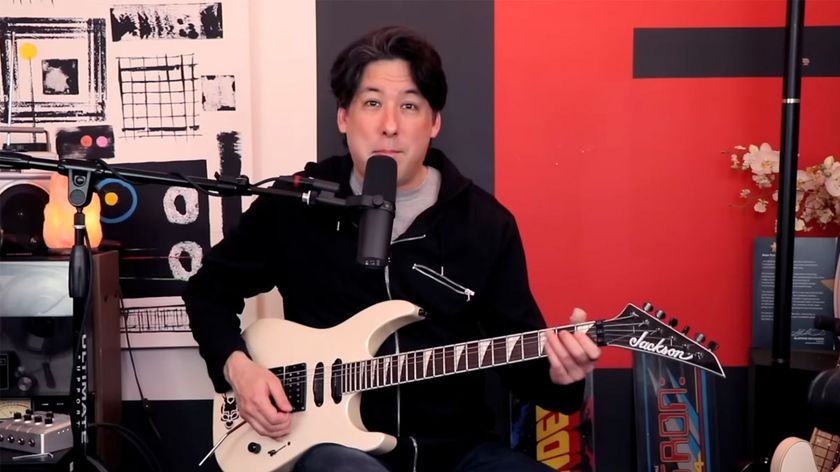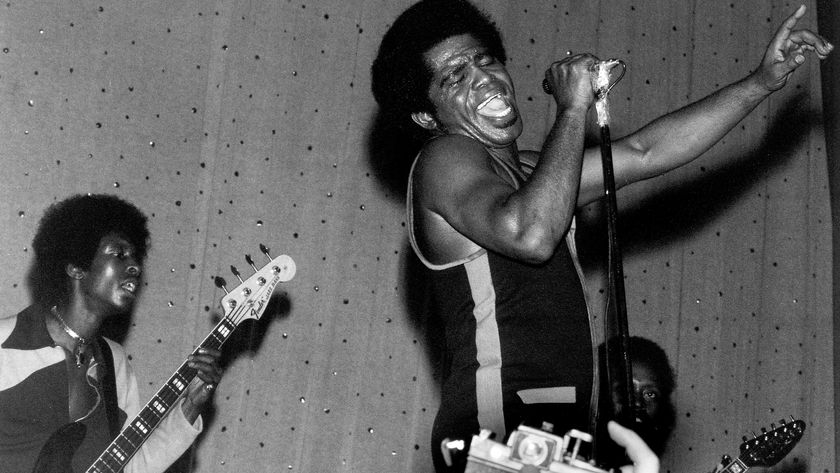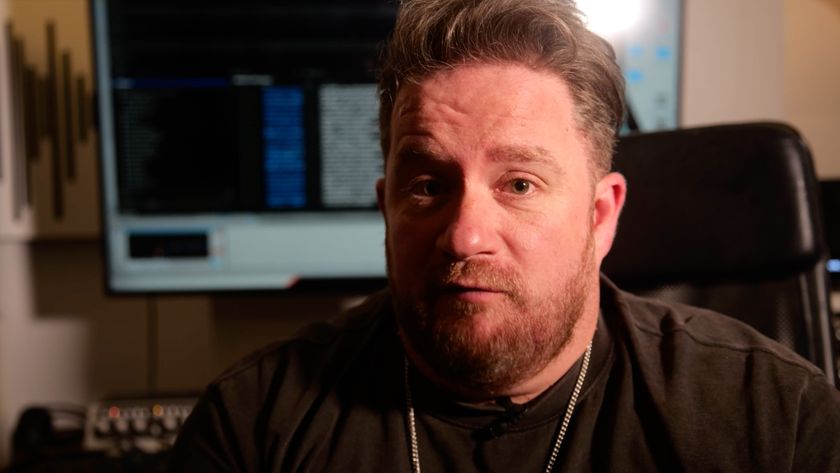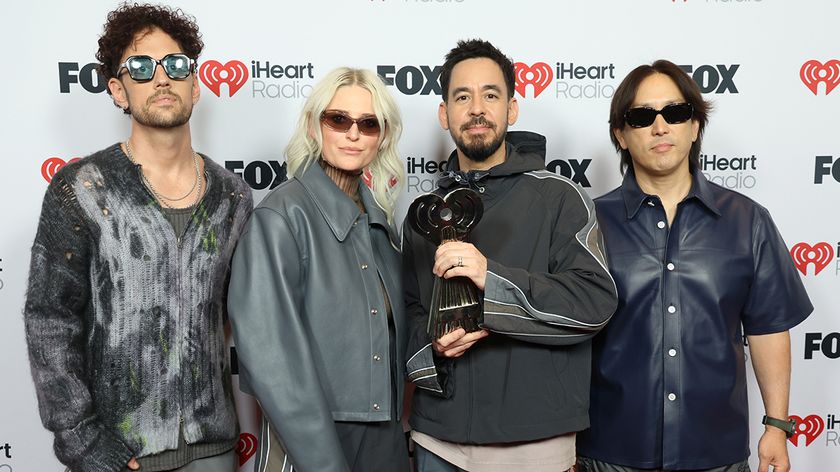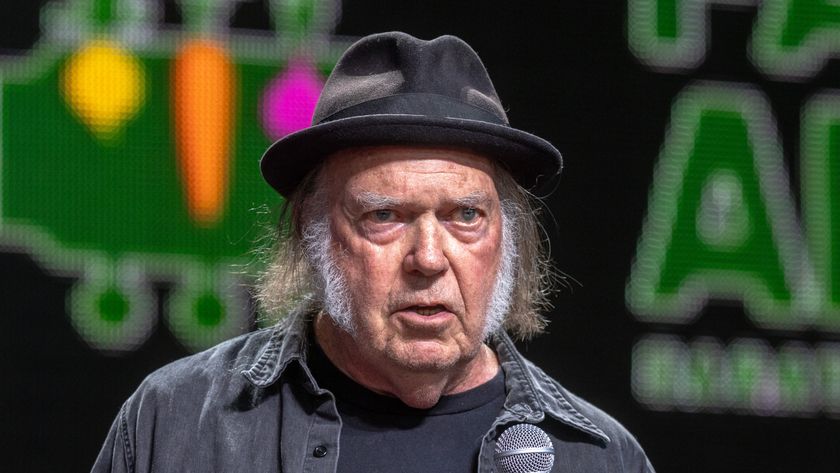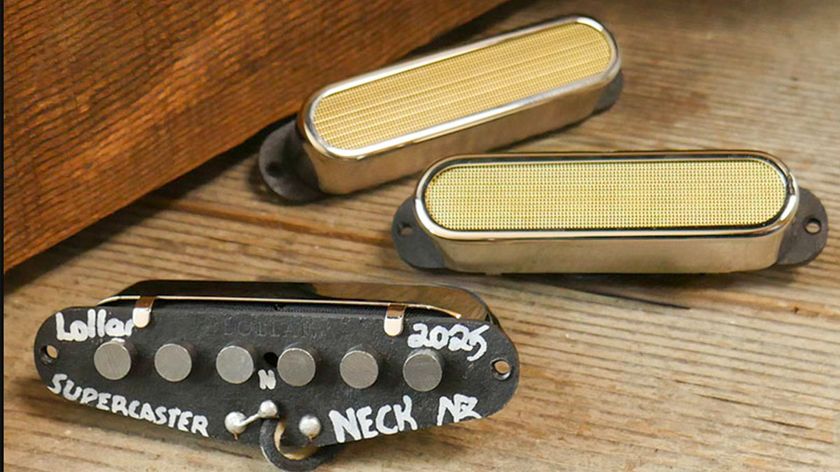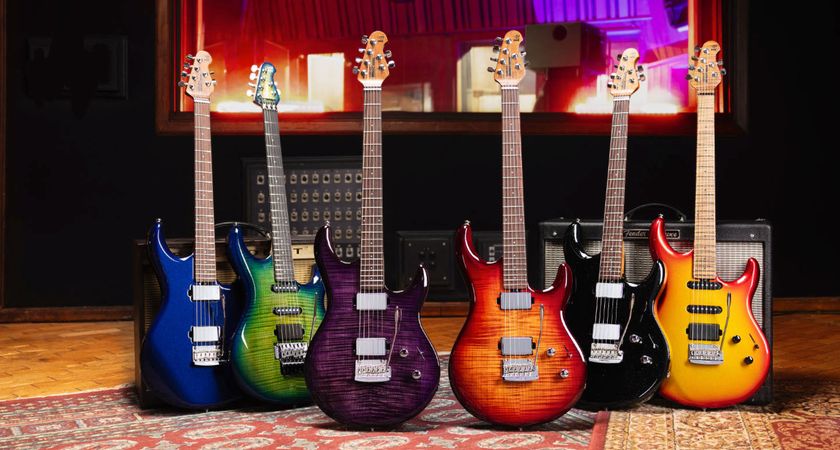29 Les Paul legends: part 2

Joe Perry
Welcome to part 2 of MusicRadar's Les Paul legends
Sharing lead and rhythm guitar duties with Brad Whitford, Aerosmith’s Joe Perry utilised numerous guitars (Strats, Teles, Mockingbirds) during the group’s first brush with fame in the '70s.
But Perry became widely associated with Les Pauls, most notably a 1958 sunburst that he was forced to part with during his drug-addled years.
Broke at the time, Perry sold his ’58 Paul in 1981 because he needed money for Christmas. Several years later, when Whitford recognized the guitar in a centerfold of Slash’s collection, Perry called the Guns N’ Roses axeman and offered to buy it back.
Slash never resold Perry his guitar. Instead, he went one better, reuniting Perry with the ’58 burst at the guitarist’s 50th birthday party (10 September 2000).
In the above photo, Perry plays one of several signature models that have borne his name since the late '90s.

Bob Marley
All too often, Bob Marley’s legacy seems to have been relegated to little more than his poster on the wall of a student bedsit, gazing through a fug of marijuana smoke with only Che Guevara for company. There might even be a copy of Legend on the stereo, but don’t count on it.
Plenty has been written about Robert Nesta Marley the man, the artist, but not enough about his guitar playing. As a Wailer, Marley was the rock solid rhythm foundation for Peter Tosh’s exploratory lead playing, best witnessed here. He might be playing a Strat in that sublime clip but it’s the heavily-modified Les Paul Junior that Gibson released a limited edition replica of in 2002 with which he’s best identified.
Currently residing in the Bob Marley museum in Kingston, Jamaica, Marley added fretboard and headstock binding to the guitar along with a stop tailpiece, aluminium pickguard and pickup selector surround to obtain that distinctive look.

Tom Scholz
Tom Scholz was just your average MIT graduate and senior product design engineer for Polaroid when he recorded some demos in his basement with a little band he called Boston.
That group (and their self-titled album) would enjoy one of the biggest debuts in music history. Key to their sound is a 1957 Les Paul goldtop Scholz bought for $300.
While Scholz also became famous for inventions such as the Rockman and Power Soak, his dense, multi-tracked rhythms and soaring solos would be unthinkable without his goldtop (which sports a Mighty Mouse decal) and a ’68 model he purchased as a backup.
Scholz keeps P-90s in the neck position of his Les Pauls, but he installed DiMarzio Super Distortion humbuckers at the bridge to minimize RF interference from stage lights. In addition, the bridges are outfitted with "gang tuning wheels" to allow for accurate pitch during outdoor shows.
Once a tinkerer, always a tinkerer.

Neil Young
Books have been written about Neil Young’s long and eclectic career, and so too, tomes could be devoted to the Les Paul that has remained his essential axe since the early '70s: Old Black.
Despite its name, Old Black is a 1953 goldtop that received its paint job before Young took possession of it. (He traded one-time fellow Buffalo Springfield member Jim Messina a Gretsch for it - who got the better of that deal?)
Old Black has received numerous mods over the years, including a Bigsby tremolo, a ‘chrome-on-brass’ pickguard and backplates and a bridge position Firebird pickup (the guitar still features its original P-90 neck pickup).
A brutal, instinctive player, famous for scorching, minimalist solos, Young has used Old Black on classic cuts such as Cinnamon Girl, Down By The River and Hey Hey, My My (Into The Black).
Check out this video in which he gives Old Black what-for while performing A Day In The Life with Paul McCartney.
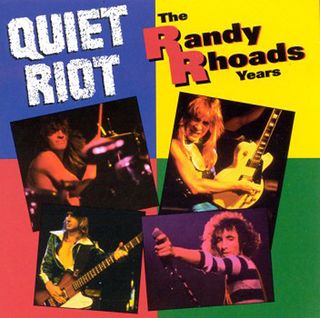
Randy Rhoads
Although Randy Rhoads was known for use of V-shaped Karl Sandoval and Jackson electrics, his main squeeze was a pancake-body 1974 Les Paul Custom, often erroneously claimed to be a 1972, that Rhoads himself believed for a long time to have been made in 1963.
Confused? We don’t blame you, but some undisputed facts about the guitar are that it was acquired for Rhoads by his Quiet Riot bandmates in the late 1970s and was modified with Schaller tuners and engraved with his name on the scratchplate. Oh, and he was pretty damn good at playing the thing too.
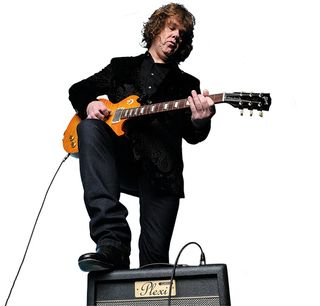
Gary Moore
Despite an expansive CV that includes a stint in Thin Lizzy, collaborations with Greg Lake and George Harrison, it’s a fiery, aggressive blues style that will forever be Gary Moore’s trademark.
Peter Green was both mentor and a key formative influence for Moore, who bought Green’s uniquely-wired 1959 Les Paul Standard in 1972 and played it for many years until it was sold in 2006.
His latest signature Les Paul blends the look of a ‘50s burst with the stripped-down aesthetic of the BFG.
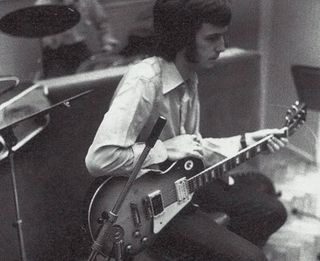
Eric Clapton
Eric Clapton’s patronage of the Gibson Les Paul Standard was brief, but it was hugely influential.
He bought a Standard (likely a 1960 model) after seeing the cover to Freddie King’s Let’s Hide Away… album, and playing through a Marshall Model 1962 combo, he changed blues-rock guitar tone overnight.
Fellow LP aficionado Gary Moore calls the album “a turning point. It blew me away completely. I wore that out and scratched the shit out of it just learning the solos.”
Clapton had his prime Les Paul Standard stolen during rehearsals for Cream's first gig in 1966. He’s played others since but he admits his Standard was “just magnificent. I never really found one as good as that. I do miss that one."
Advice to Eric: just pick up a Les Paul again? Just once?
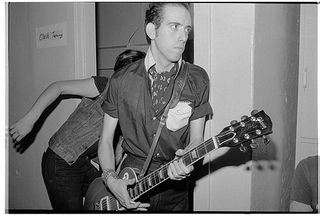
Mick Jones
The Clash were once called “the only band that matters,” and for guitarist Mick Jones, the only guitar that mattered might as well have been a Les Paul.
Inspired by New York Dolls’ Johnny Thunders, Jones’ first guitar was a Les Paul Junior with P-90 pickups. By the time The Clash got rolling, he moved up to Les Paul Standards and Customs.
While rhythm guitarist and main singer Joe Strummer preferred Telecasters, Jones opted for a fatter sound and played a variety of Les Pauls on The Clash’s 1979 breakthrough album London Calling.
In the above photo, he’s holding a sunburst Les Paul Standard. And in this video for Train In Vain, Jones wields a black Les Paul Custom (he was equally attached to an Alpine White model).

Scott Gorham
Thin Lizzy were the archetypal twin-Les Paul band, and Gorham was the only guitar constant.
Next to the aggressive styles of partners Brian Robertson, Gary Moore and John Sykes, Gorham had a smooth, lyrical, almost laid-back style. He switched from a Les Paul Deluxe (with mini-humbuckers) to a refinished wine-red ’57.
In recent years, he’s switched to Fender Strats. Gorham admits: “the Les Paul is a great guitar - looks great, sounds great, but it's so fucking heavy. It's like wheeling along a bag of cement!”
Tough, Scott. Thin Lizzy’s Live And Dangerous album = a bag worth hauling.

Paul Kossoff
Another Brit blues-rocker inspired by the Bluesbreakers/Clapton Beano album, the mercurial Free guitarist played three Les Pauls, all pre-1960.
In return, Clapton was a fan of Koss, swapping a sunburst Les Paul of his own for Kossoff’s three-pickup black Custom.
Kossoff’s drug problems made for a tragically short life – he died at 26 – but his heavy-stringed, quick-vibrato style undoubtedly left a mark on ‘70s rock. Classic Kossoff here.
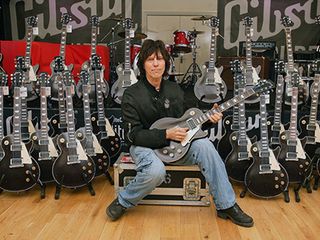
Jeff Beck
As with Eric Clapton, most people think of Jeff Beck as a Strat player now.
But in the late ‘60s and early-‘70s, the roar of Beck’s ‘Oxblood’ Les Paul had its own power.
Says Beck: “In a small band, Les Pauls had a big powerful thick voice through a Marshall that no other guitar had.” Gibson reissued a limited-edition replica in 2008. Watch Beck talk about Les Pauls here.
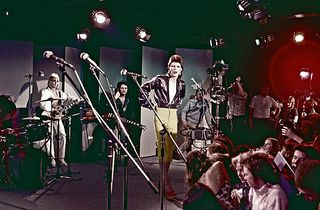
Mick Ronson
Although he would go on to work with Bob Dylan, Roger McGuinn and Morrissey, Mick Ronson’s creative high was unquestionably in 1971-2 on David Bowie’s incredible Hunky Dory and The Rise And Fall Of Ziggy Stardust And The Spiders From Mars LPs. Much more than a mere guitar foil, Ronson also helped arrange arguably the best songs in Bowie’s glittering canon.
Ronson manned the desk on another stone cold classic alongside Bowie in the shape of Lou Reed’s Transformer, an album that also featured his distinctive, Jeff Beck-influenced lead guitar. However, for all his studio invention, it’s the image of a glammed-up Spiders-era Ronson wielding his paint-stripped 1968 Les Paul Custom onstage that endures.
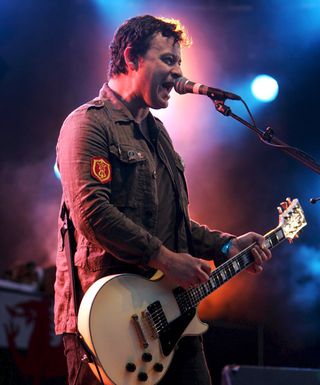
James Dean Bradfield
Although the Manic Street Preachers frontman has played a lot of different guitars and drawn inspiration from six-stringers as wide ranging as Simple Minds’ Charlie Burchill and Fleetwood Mac’s Lindsey Buckingham, it’s the white seventies Les Paul Custom and Slash-influenced solo stylings of his early work that still defines him.
Bradfield’s main Les Paul is signed by Sex Pistol Steve Jones on the back – “I’m such a sad c**t I had it laminated immediately” – and speaking to Guitarist magazine in 2004 he revealed a still-strong love for Les Pauls:
“Strats always seemed like a slutty guitar – too easy! When I see young kids putting on a Les Paul and saying, Aww, it’s very heavy… I just think, Ponce! You feel you have to drag the music out of Les Pauls. You have to fight it, they’re much more confrontational to the player, but I think that’s good.”
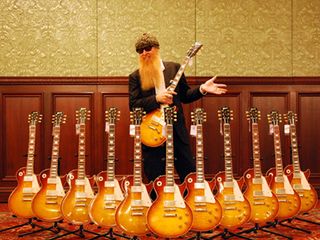
Billy Gibbons
Billy Gibbons - or the Reverend Willie G, as he's sometimes known - has a guitar collection as big as the state of Texas. But the ZZ Top guitarist would be lost without a certain Les Paul said to have 'divine connections.'
Pearly Gates, Gibbons' treasured '59 sunburst Les Paul, has been featured on every single ZZ Top album. The guitarist claims it has a "God-like voice," unlike that of any other instrument he's ever played.
Players hoping to emulate that famous, down-and-dusty Billy Gibbons blues-based sound can try to pick with a Mexican peso - his plectrum of choice - or they can buy one of the 350 limited edition Pearly Gates Les Paul Standards Gibson has recently produced.
The Pearly Gates models are replicated in excruciating detail, aged to look just like the real McCoy, with every scratch and ding right where it should be. Pesos (and beards!) are not included.

Les Paul
Finally, the man himself. Where would any of our Les Paul legends be without Lester William Polsfuss?
Playing much less cool guitars, for sure. Sounding quite different, certainly. Perhaps not even playing at all.
Missed part one of our gallery? Check out 29 Les Paul legends: part 1 here.

MusicRadar is the number one website for music-makers of all kinds, be they guitarists, drummers, keyboard players, DJs or producers...
- GEAR: We help musicians find the best gear with top-ranking gear round-ups and high-quality, authoritative reviews by a wide team of highly experienced experts.
- TIPS: We also provide tuition, from bite-sized tips to advanced work-outs and guidance from recognised musicians and stars.
- STARS: We talk to musicians and stars about their creative processes, and the nuts and bolts of their gear and technique. We give fans an insight into the craft of music-making that no other music website can.
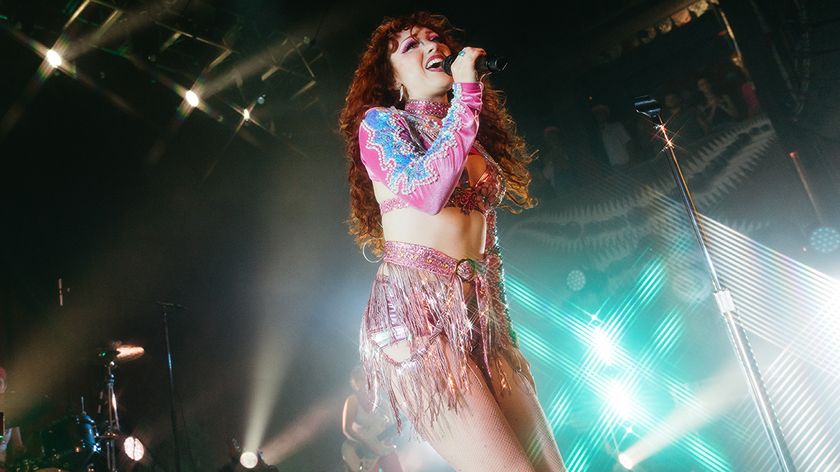
“The solo is very recognisable and crucial to the song”: How Chappell Roan’s former touring guitarist handled the Pink Pony Club guitar solo live on stage
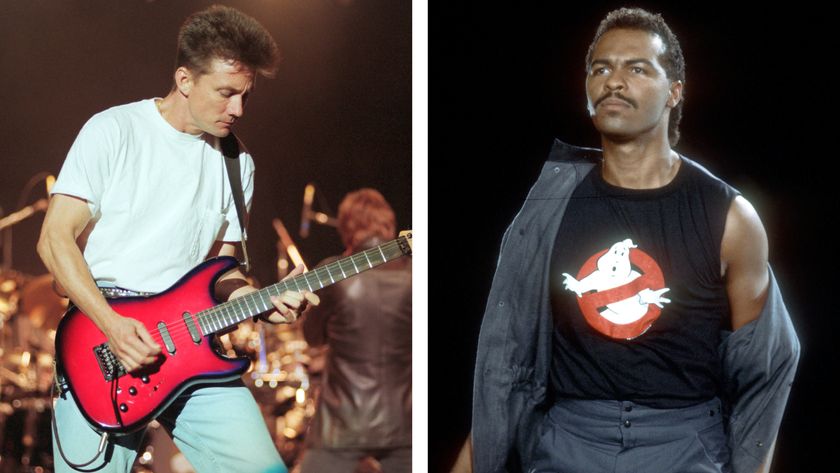
“I am under an NDA, but I think everybody knows what happened”: Former Huey Lewis and the News guitarist Chris Hayes on that Ghostbusters plagiarism dispute

“The solo is very recognisable and crucial to the song”: How Chappell Roan’s former touring guitarist handled the Pink Pony Club guitar solo live on stage

“I am under an NDA, but I think everybody knows what happened”: Former Huey Lewis and the News guitarist Chris Hayes on that Ghostbusters plagiarism dispute
